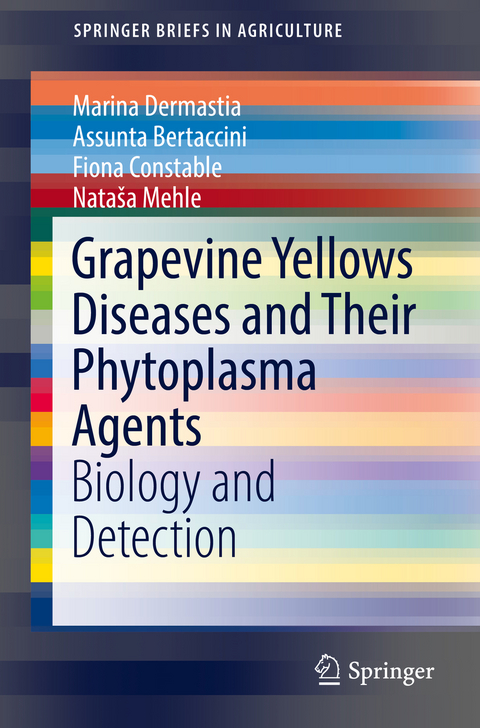
Grapevine Yellows Diseases and Their Phytoplasma Agents
Springer International Publishing (Verlag)
978-3-319-50647-0 (ISBN)
Prof. Marina Dermastia, National Institute of Biology, Ljubljana, SloveniaDr. Nataša Mehle, National Institute of Biology, Ljubljiana, SloveniaFiona Constable Ph.D., Biosciences Research Division, Bundoora, AustraliaProf. Assunta Bertaccini, University of Bologna, Plant Pathalogy, Bologna, Italy
Phytoplasmas - dangerous and intriguing bacteria.- Worldwide distribution and identification of grapevine yellows diseases.- Grapevine yellows phytoplasmas in Europe.- Grapevine yellows phytoplasmas in America.- Grapevine yellows phytoplasmas in Africa.- Ggrapevine yellows phytoplasmas in Australia.- Interactions between grapevines and grapevine yellows phytoplasmas BNp and FDp.- How phytoplasmas interact with their hosts, based on analysis of their genomes.- Pre-symptomatic grapevine responses to grapevine yellows phytoplasma infection.- Ultrastructure of phloem infected with grapevine yellows phytoplasmas.- Infection of grapevine with grapevine yellows phytoplasmas affects photosynthesis.- Grapevine yellows phytoplasma infection is associated with prominent changes in carbohydrate metabolism.- Grapevine yellows phytoplasma infection affects the plant-energy-associated network.- Changed concentrations of amino acids in infected vein-enriched grapevine samples.- Changes in the flavonoid pathway in grapevineyellows phytoplasma infected grapevines.- Induced salicylic-acid-dependent systemic acquired resistance in grapevines infected with grapevine yellows phytoplasmas.- The recovery and oxidative-stress phenomena.- Detection of phytoplasmas associated to grapevine yellows diseases in research and diagnostics.- Biological tests.- Microscopy techniques.- Immunological approaches.- Molecular approaches.- Step-by-step routine detection of grapevine yellows phytoplasmas
| Erscheinungsdatum | 04.03.2017 |
|---|---|
| Reihe/Serie | SpringerBriefs in Agriculture |
| Zusatzinfo | IX, 99 p. 10 illus., 5 illus. in color. |
| Verlagsort | Cham |
| Sprache | englisch |
| Maße | 155 x 235 mm |
| Themenwelt | Naturwissenschaften ► Biologie ► Botanik |
| Schlagworte | agricultural science • Agriculture • applied microbiology • Biomedical and Life Sciences • Biotechnology • Botany and plant sciences • Grapevine yellows • Life sciences: general issues • Microbiology (non-medical) • Molecular detection • Omics approaches • Phytoplasma • phytoplasma - grapevine interaction • phytoplasma – grapevine interaction • plant pathology |
| ISBN-10 | 3-319-50647-1 / 3319506471 |
| ISBN-13 | 978-3-319-50647-0 / 9783319506470 |
| Zustand | Neuware |
| Haben Sie eine Frage zum Produkt? |
aus dem Bereich


